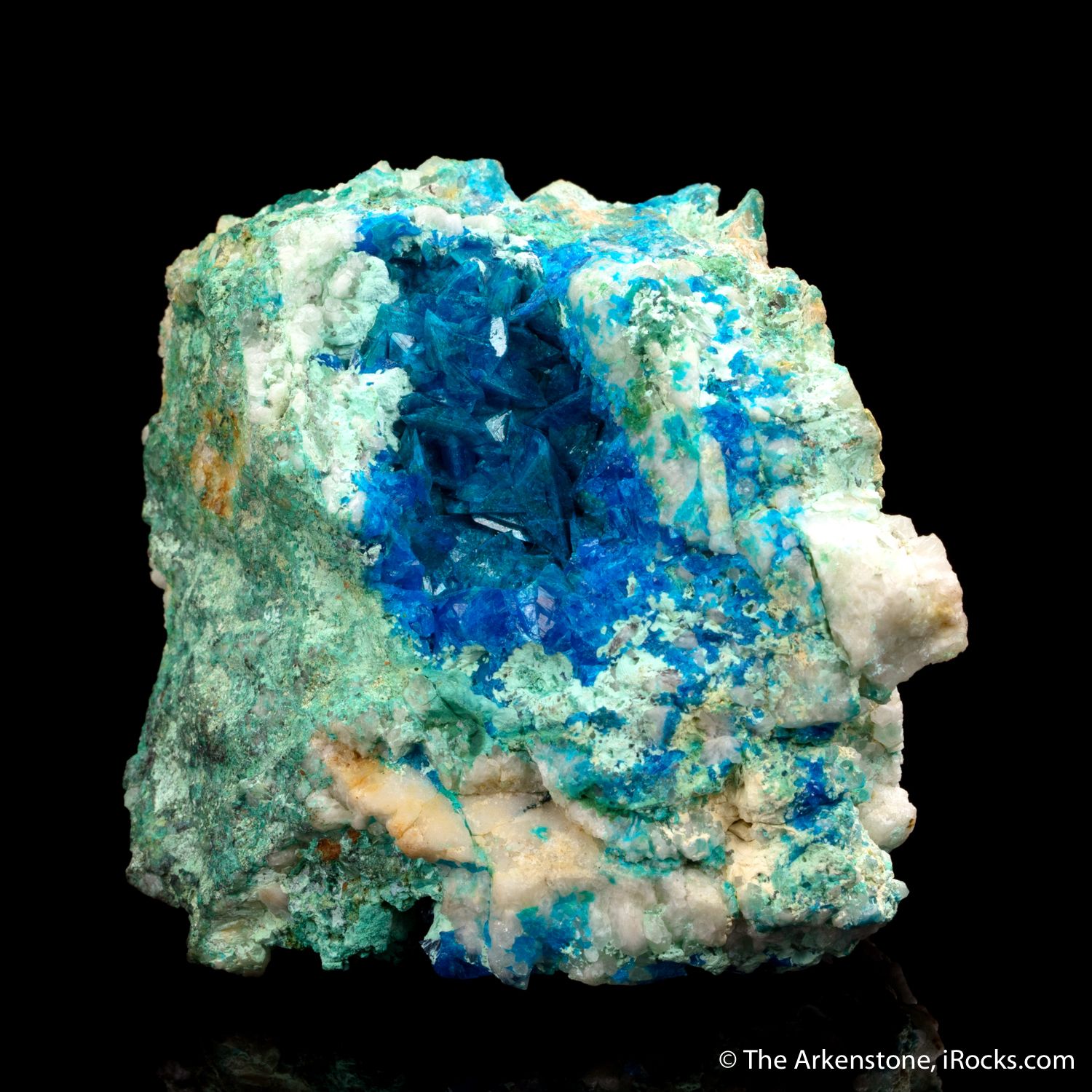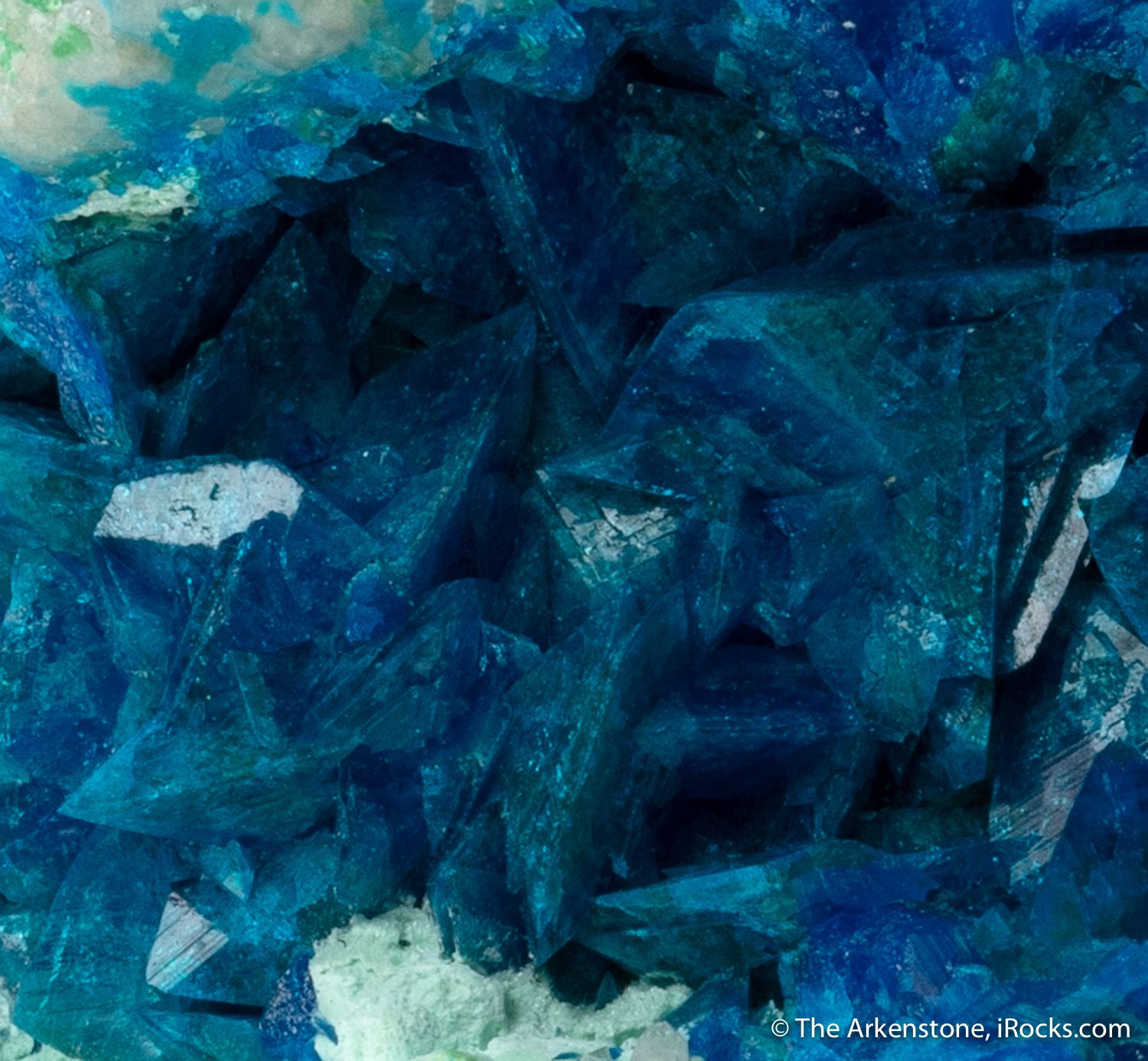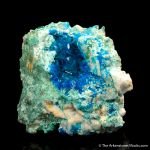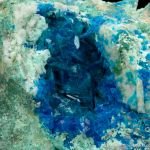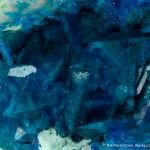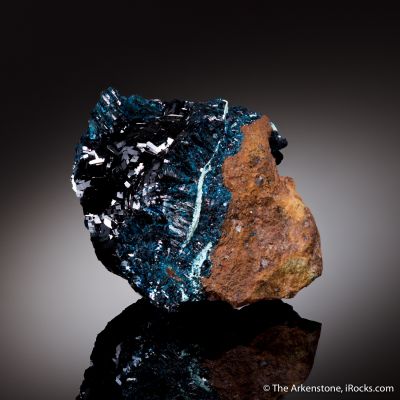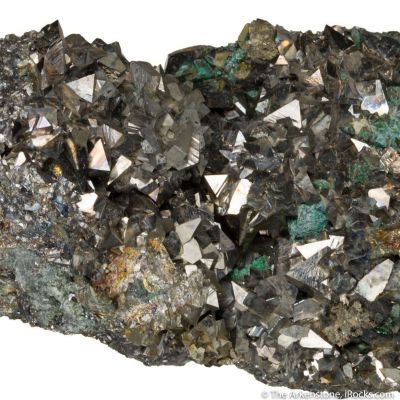- SM21-185
- Liroconite and Clinoclase (type locality for both)
- Wheal Gorland, St Day, Cornwall, England, UK
- Small Cabinet, 6.1 x 4.7 x 3.9 cm
- Ex. Nick Carruth
- SOLD
Liroconite and Clinoclase are very rare copper arsenate species found in the oxidized zones of just a few ore deposits, most notably here, at the type locality (for both species) of Wheal Gorland. It is widely reported that all good specimens of these that we see today came out of the ground by the 1870s at the latest and mostly before 1860. This choice small cabinet has a nice pocket centered in the middle of this colorful piece with lustrous, variegated teal-blue to teal-green, pseudo-octahedral Liroconite crystals that average 5 mm in size. The crystals are actually transparent when viewed with a loupe or a microscope and have a bright luster. There are about two dozen, well formed crystals here, that have sharp faces and edges. The Liroconite pocket is hosted in a multicolored, pale blue, pale green, dark blue and white matrix consisting of Chrysocolla, Clinoclase, Quartz and possibly Chalcophyllite and Cornwallite. There is also a bright blue knot of Liroconite on the backside that has a central core of dark blue, radial Clinoclase. Specimens of this size and richness for both Liroconite and Clinoclase are very scarce on the market. They only come up in old collections, and even then it is far and few between. Frankly, I buy every good one I can lay hands on for their beauty, uniqueness, and importance as historic pieces. The richness and quality of these crystals is quite high, the color is very saturated, and this piece has great provenance (going back through several collectors) and mineralogical significance. This is a striking piece with intense color, perhaps the best color I can recall seeing for sheer color saturation, for Liroconite. The color is unique - as there is not another mineral like it. This piece happens to be a superb old classic with superb provenance and beauty by modern standards - the trifecta! Note that this seems to be pure liroconite, without an association or mix/conversion into the recently identified and related species kernowite. This piece dates to the 1800s, and was then in the Birmingham University collection , exchanged out in a large trade with dealer Simon Harrison in the 1980s that was one of the most exciting deaccessions to come to light from an old English collection at the time, and still talked about today. He sold it to Nick Carruth, who built one of the few great Cornwall collections of the modern era. This carries Nick's label, and a note relating that he got it from Simon (a source for so many good things at the time), relating it to the accession information Simon got from the Museum. It came from the collection of Colonel John Winson Rimington, 1832-1909. I love the old Rimington label from the 1800s - "Name, Synonyms, and Peculiarities" asked for...This is indeed "very fine old specimen" as the label from over 100 years ago confirms. For the history and provenance, but also for beauty, this has to be one of our favorite Liroconites handled in a long time.
